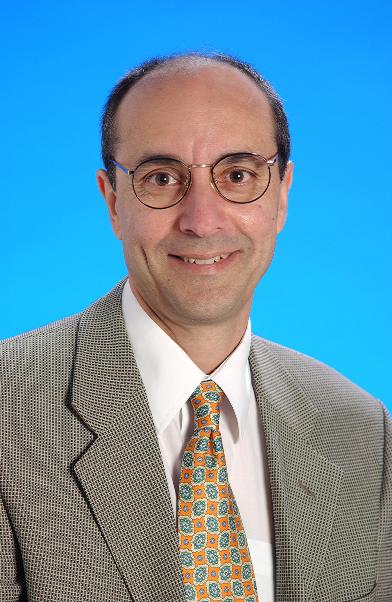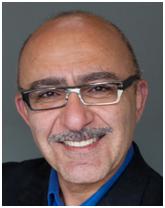Keynote Speakers
Yvan Baudoin
Royal Military Academy (RMA), Brussels, Belgium
TIRAMISU : FP7-Project for an integrated toolbox in Humanitarian Demining, focus on UGV, UAV, technical survey and close-in-detection
Abstract
The TIRAMISU project aims at providing the foundation for a global toolbox that will cover the main mine action activities, from the survey of large areas to the actual disposal of explosive hazards, including mine risk education and training tools. After a short description of some tools, particular emphasis will be given to the possible use of UAV (or UGV/UAV) in Technical survey and/or Close-in-Detection.
Biography
| Title: | Professor emeritus |
| Position: | Executive Head of the Unmanned Vehicle Centre, Scientific collaborator of the Polytechnic faculty, Former Head of the Department of Mechanical Engineering |
| Organization: | Polytechnic Faculty, Royal Military Academy (RMA), Brussels, Belgium |
Educational Background:
- Engineer Electro-Mechanical Engineering (Polytechnics, Brussel)
- Post-Master Automatic/Robotics Engineering (Free University, Brussels)
- Post-Master High Statistical Studies (University Paris VI)
- Doctor Honoris Causa (Technical University of Iasi, Romania)
Areas of Interests & Contribution in the IT Field:
- Head of Programming Division of Informatics Centre of Belgian Defense (79/83)
- Member of NATO: Working Groups on Robotics, Human-Machine-Interfaces, Advanced Electrical Mobility Control (85/2011)
- Voting Member NATO/Research and Technical Organisation/Applied vehicle Technology (2008-2011)
- EDA (European Defense Agency) Project-Initiator in Multi-Robotics Cooperation (2005-2009) (NMRS)
- Head of IARP (International Advanced Robotics Program) Working Group on Robotics for Humanitarian De-mining (HUDEM), Robotics for Risky Interventions (RISE) and official Belgian Representative in IARP (2001- 2011)
- FP6 – View-Finder Robotics Project (2006/2009)
- Former Deputy Director of CLAWAR (Robotics) Association (2006- 2010)
- EUREKA project TENEEST (2007- 2011)
- FP7 – TIRAMISU Coordinator (2012-2015)
- FP7 – ICARUS Member of Project management Team (2012-2015)
Yoshihiko Nakamura
Abstract
Evolution of the human brain emerged by the pressure for communication. It is hard to believe that the pressure of evolution exempted the features of motion patterns from using them for communication. The communication skill is therefore anthropomorphic.
The author would like to call the natural function of the brain to perceive, recognize, understand and respond to the human-like motion patterns, the Anthropomorphic Biological Equipment. The natural and general human-machine interface can be established by developing the similar function on the machine side, which we may call the Anthropomorphic Artificial Equipment. Our research started from the mathematical model of mirror neurons and continues to acquisition of semiology of human behaviors based on technologies such as unsupervised segmentation, iterative clustering, and construction of state transition network. The current research interests target to connect the behavioral semiology to the semiology of a natural language to develop a statistical system that evokes mutual association. This talk introduces the scope of our research and overviews the direction of research.
Biography
Yoshihiko Nakamura received Doctor of Engineering Degree from Kyoto University in 1985. He was Assistant Professor of Kyoto University, from 1982 to 1987, and then Assistant and Associate Professor of University of California, Santa Barbara from 1987 to 1991. Since 1991, he has been with University of Tokyo, Japan, and is currently Professor at Department of Mechano-Informatics. Humanoid robotics, cognitive robotics, neuro musculoskeletal human modeling, biomedical systems, and their computational algorithms are his current fields of research. He is Fellow of Japan Society of Mechanical Engineers, Fellow of Robotics Society of Japan, Fellow of IEEE, and Fellow of World Academy of Arts and Science. Dr. Nakamura currently (2012-2015) serves as President of International Federation for the Promotion of Mechanism and Machine Science (IFToMM). Dr. Nakamura is Foreign Member of Academy of Engineering Science of Serbia, and TUM Distinguished Affiliated Professor of Technische Universität München.
Marcus Pandy

Department of Mechanical Engineering, University of Melbourne
Muscle Coordination of Human Locomotion
Abstract
Gait-analysis techniques have been used for more than a century to provide information on the kinematics and kinetics of human locomotion, yet the ability of this technique to quantify function is limited because it cannot be used to discern the actions of individual muscles. Computational modelling is the only means available to determine musculoskeletal loading non-invasively. Rapid increases in computing power combined with recent advances in imaging and more efficient algorithms for modelling the musculoskeletal system have enabled more detailed analyses of lower-limb muscle function. This presentation will illustrate how computational modelling has been used to study muscle coordination of human locomotion across a wide spectrum of walking and running speeds. The results have important applications in medicine (orthopaedics), sports (training and injury prevention) and robotics.
Biography
Marcus Pandy is appointed as Chair of Mechanical and Biomedical Engineering in the Department of Mechanical Engineering at The University of Melbourne. He received a PhD in mechanical engineering from the Ohio State University, Columbus. Prior to joining the University of Melbourne, he held the Joe J. King Professorship in Biomedical Engineering at the University of Texas at Austin. He is a Fellow of the American Institute of Medical and Biological Engineering, the American Society of Mechanical Engineers and the Institute of Engineers Australia. A focus of Pandy’s research is to combine biomechanical experiments and computational modelling to describe and explain muscle and joint function during daily activities such as gait.
Homayoon Kazerooni

University of California, Berkeley
Exoskeleton Systems for Medical and Civilian Applications
Abstract
For widespread use, exoskeletons must be accessible.The medical wearable robotic exoskeletons allow people with paraplegia or other mobility disorders to be upright and mobile, preventing secondary diseases and enhancing their quality of life. These systems will be used for in-home care and everyday use, as well as within hospitals and rehabilitation centers. The industrial wearable robotic systems minimize spinal compression forces of workers who repeat various maneuvers on the job. These devices will be used in auto assembly plants, factories, manufacturing facilities, distribution centers, warehouses, and delivery services. These systems decrease the severity and number of work-related injuries, while enhancing worker safety. The quest to develop accessible exoskeleton orthotic systems suggestsless hardware while placing more emphasis on theintelligence and cleverness during both the design stage and the device operation.This talk will describe newengineeringdevelopments to realize accessible exoskeleton systems.
Biography
Dr. Kazerooni is a Professor in the Mechanical Engineering Department at the University of California, Berkeley and director of the Berkeley Robotics and Human Engineering Laboratory. The laboratory’s mission is to develop fundamental scientific and engineering principles on robotics, control sciences, exoskeletons, and bioengineering. Dr. Kazerooni is also the founder of Ekso Bionics. Most of the developed technologies in this lab have found their ways to market. Prior to his research work on lower extremity exoskeletons, Dr. Kazerooni led his team to successfully develop robotics systems that enhance human upper extremity strength. The results of this work led to a new class of intelligent assist devices currently being used by workers worldwide for manipulating heavy objects in distribution centers and factories. Dr. Kazerooni holds a Doctorate in Mechanical Engineering from MIT and has published more than two hundred articles, delivered over 100 plenary lectures in the U.S. and internationally, and holds numerous pertinent patents and awards. As a noted authority on robotics, he is frequently profiled and quoted in the media.

 University of Tokyo
University of Tokyo